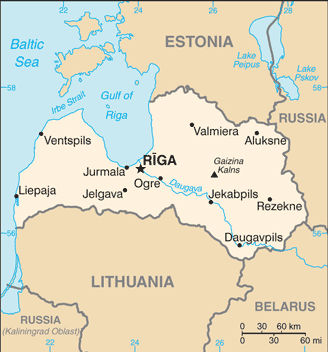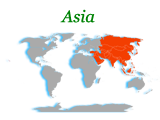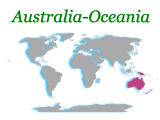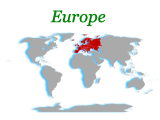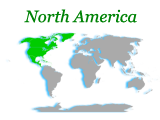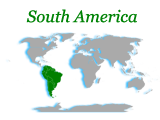The name "Latvia" originates from the ancient Latgalians, one of four eastern Baltic tribes that formed the ethnic core of the Latvian people (ca. 8th-12th centuries A.D.). The region subsequently came under the control of Germans, Poles, Swedes, and finally, Russians. A Latvian republic emerged following World War I, but it was annexed by the USSR in 1940 - an action never recognized by the US and many other countries. Latvia reestablished its independence in 1991 following the breakup of the Soviet Union. Although the last Russian troops left in 1994, the status of the Russian minority (some 30% of the population) remains of concern to Moscow. Latvia joined both NATO and the EU in the spring of 2004.
Country Name
Conventional long form:Republic of Latvia
Conventional short form:Latvia
Local long form:Latvijas Republika
Local short form:Latvija
Former:Latvian Soviet Socialist Republic
Government Type
parliamentary democracy
Capital
Name:Riga
Geographic coordinates:56 57 N, 24 06 E
Time difference:UTC+2 (7 hours ahead of Washington, DC during Standard Time)
daylight saving time: +1hr, begins last Sunday in March; ends last Sunday in October
Administrative divisions
26 counties (singular - rajons) and 7 municipalities*: Aizkraukles Rajons, Aluksnes Rajons, Balvu Rajons, Bauskas Rajons, Cesu Rajons, Daugavpils*, Daugavpils Rajons, Dobeles Rajons, Gulbenes Rajons, Jekabpils Rajons, Jelgava*, Jelgavas Rajons, Jurmala*, Kraslavas Rajons, Kuldigas Rajons, Liepaja*, Liepajas Rajons, Limbazu Rajons, Ludzas Rajons, Madonas Rajons, Ogres Rajons, Preilu Rajons, Rezekne*, Rezeknes Rajons, Riga*, Rigas Rajons, Saldus Rajons, Talsu Rajons, Tukuma Rajons, Valkas Rajons, Valmieras Rajons, Ventspils*, Ventspils Rajons
Independence
18 November 1918 (from the Soviet Russia)
National Holiday
Independence Day, 18 November (1918); note - 18 November 1918 was the date Latvia declared itself independent from Soviet Russia; 4 May 1990 is when it declared the renewal of independence; 21 August 1991 was the date of de facto independence from the Soviet Union
Constitution
15 February 1922; restored to force by the Constitutional Law of the Republic of Latvia adopted by the Supreme Council on 21 August 1991; multiple amendments since
Legal system
based on civil law system with traces of Socialist legal traditions and practices; has not accepted compulsory ICJ jurisdiction
Suffrage
18 years of age; universal for Latvian citizens
Executive branch
Chief of state:President Valdis ZATLERS (since 8 July 2007)
Head of government:Prime Minister Valdis DOMBROVSKIS (since 12 March 2009)
Cabinet:Cabinet of Ministers nominated by the prime minister and appointed by Parliament
(For more information visit the World Leaders website)
Elections:president elected by Parliament for a four-year term (eligible for a second term); election last held on 31 May 2007 (next to be held in 2011); prime minister appointed by the president, confirmed by Parliament
Election results:Valdis ZATLERS elected president; parliamentary vote - Valdis ZATLERS 58, Aivars ENDZINS 39
Legislative branch
unicameral Parliament or Saeima (100 seats; members elected by proportional representation from party lists by popular vote to serve four-year terms)
Elections:last held on 7 October 2006 (next to be held in October 2010)
Election results: percent of vote by party - TP 19.5%, ZZS 16.7%, JL 16.4%, SC 14.4%; LPP/LC 8.6%; TB/LNNK 6.9%; PCTVL 6%; seats by party - TP 23, ZZS 18, JL 18, SC 17, LPP/LC 10, TB/LNNK 8, PCTVL 6; note - seats by party as of November 2009 - TP 21, SC 18, ZZS 17, JL 15, LPP/LC 10, Civic Union 6, TB/LNNK 5, PCTVL 5, independents 3
Judicial branch
Supreme Court (judges' appointments are confirmed by parliament); Constitutional Court (judges' appointments are confirmed by parliament)
Political Parties and Leaders
Civic Union [Sandra KALNIETE, Girts Valdis KRISTOVSKIS]; First Party of Latvia/Latvia's Way or LPP/LC [Ainars SLESERS]; For Human Rights in a United Latvia or PCTVL [Jakovs PLINERS, Tatjana ZDANOKA]; For the Fatherland and Freedom/Latvian National Independence Movement or TB/LNNK [Roberts ZILE, Maris GRINBLATS]; Harmony Center or SC [Nils USAKOVS, Janis URBANOVICS]; New Era Party or JL [Solvita ABOLTINA, Dzintars ZAKIS]; People's Party or TP [Andris SKELE]; Society for Different Politics or SCP [Aigars STOKENBERGS; Artis PABRIKS]; The Union of Latvian Greens and Farmers Party or ZZS [Augusts BRIGMANIS]
Political pressure groups and leaders
Free Trade Union Confederation of Latvia [Peteris KRIGERS], Employers' Confederation of Latvia [Elina EGLE], Farmers' Parliament [Juris LAZDINS]
International organization participation
Australia Group, BA, BIS, CBSS, CE, EAPC, EBRD, EIB, EU, FAO, IAEA, IBRD, ICAO, ICCt, ICRM, IDA, IFC, IFRCS, IHO, ILO, IMF, IMO, IMSO, Interpol, IOC, IOM, IPU, ISO (correspondent), ITU, ITUC, MIGA, NATO, NIB, NSG, OAS (observer), OIF (observer), OPCW, OSCE, PCA, Schengen Convention, UN, UNCTAD, UNESCO, UNWTO, UPU, WCO, WFTU, WHO, WIPO, WMO, WTO
Diplomatic representation in the US
Chief of mission:Ambassador Andrejs PILDEGOVICS
Chancery: 2306 Massachusetts Ave. NW, Washington, DC 20008
Telephone:[1] (202) 332-6416
FAX:[1] (202) 332-4923
Diplomatic representation from the US
Chief of mission:Ambassador Ravic R. HUSO
Embassy:19 Rue Bartholonie, That Dam, Vientiane
Mailing address:American Embassy Vientiane, APO AP 96546
Telephone:[856] 21-26-7000
FAX:[856] 21-26-7190
Flag description
three horizontal bands of red (top), blue (double width), and red with a large white disk centered in the blue band


